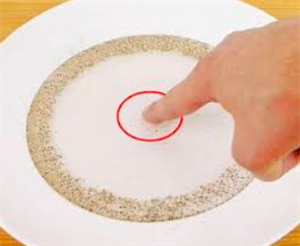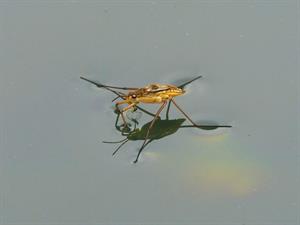
PUMPA - SMART LEARNING
எங்கள் ஆசிரியர்களுடன் 1-ஆன்-1 ஆலோசனை நேரத்தைப் பெறுங்கள். டாப்பர் ஆவதற்கு நாங்கள் பயிற்சி அளிப்போம்
Book Free DemoWe know that liquids and fluids are shapeless. Raindrops are spherical in shape. But, rainwater in the streams and lakes is different.
Then how raindrops are spherical in shape?
It is because of surface tension. When the water molecules fall from the sky due to gravity, they experience a contraction (tension) in the extent of the surface, making it spherical in shape.
Surface tension:
Surface tension can be defined as the amount of force acting per unit length on any liquid. Its unit is
N/m.
N/m.
Let us look at the activity to understand surface tension:
Try it at your home:
Take a plate and pour water into it. Take pepper and sprinkle it all over the surface of the water. If you dip your finger alone, pepper will stick onto your hand. Apply some soap to your finger and touch the water. Now, you can see the pepper will spread to the sides of the plate. This is because the water molecules want to keep its surface tension, so they pull themselves away from the soap carrying pepper along with it.

Some more applications of surface tension:
- In plants, water molecules rise up due to surface tension. Xylem tissues are narrow vessels present in plants. The roots absorb water molecules, and these vessels help the water rise upward due to “capillarity action” caused by the surface tension of water.
- During a heavy storm, ships are damaged due to the surface tension of water. By pouring oil or soap powder into the sea, sailors reduce its impact.
- Water strider insect slides on the surface of the water due to surface tension.

Water strider
Reference:
https://pxhere.com/en/photo/616993